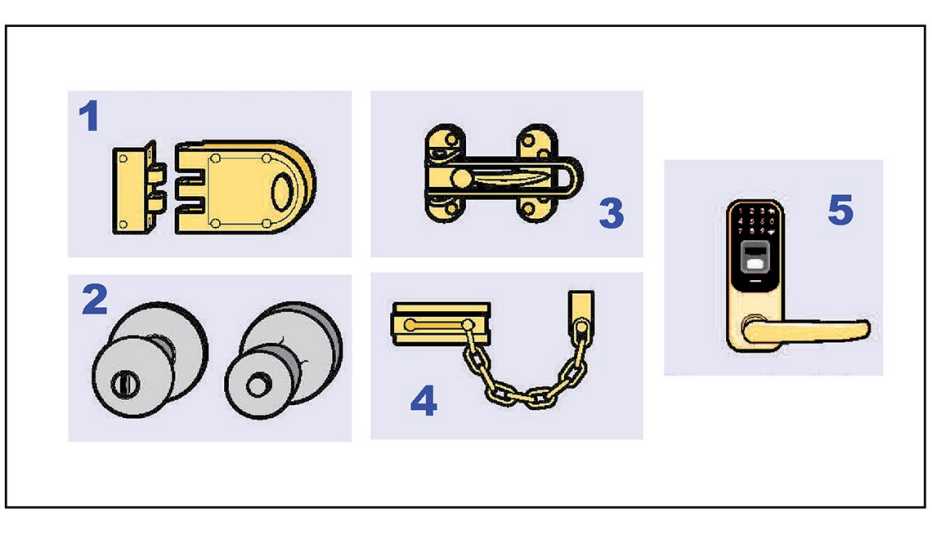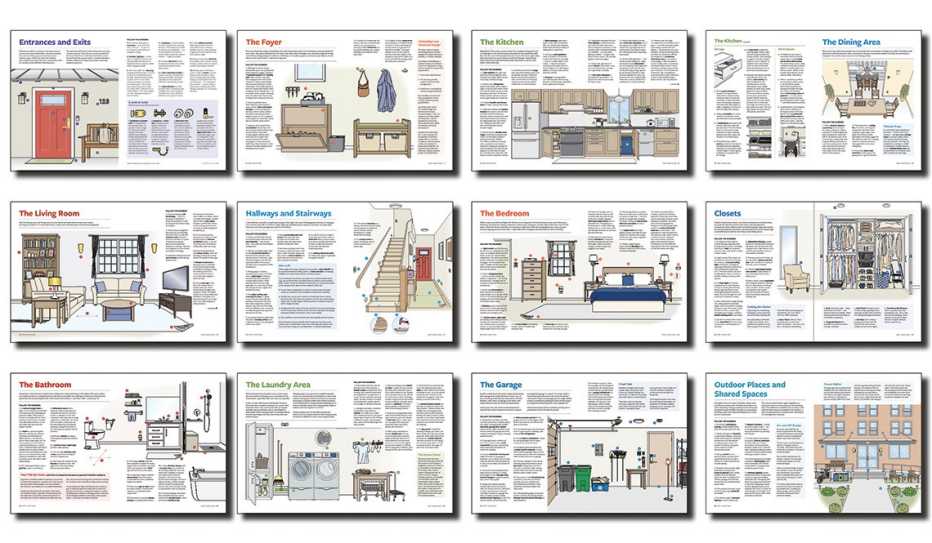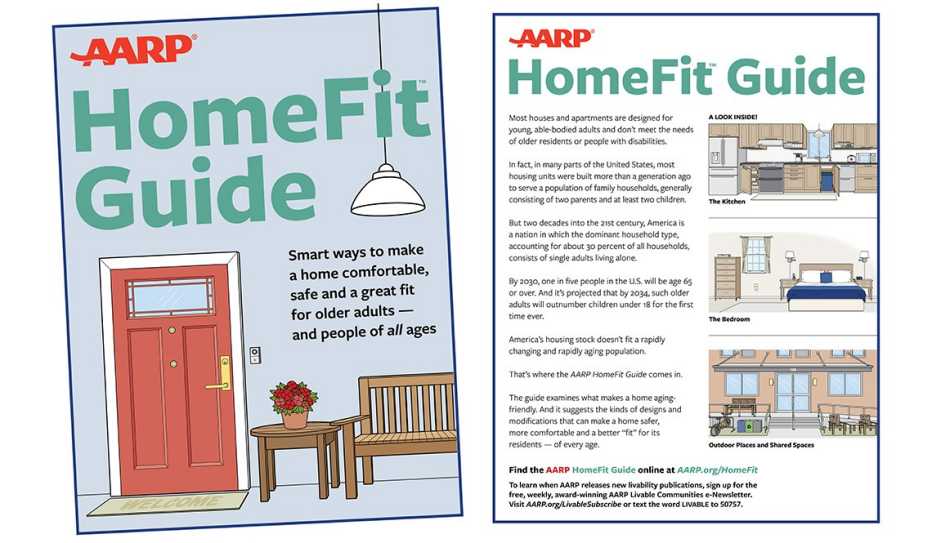AARP Hearing Center


Door locks come in several shapes, sizes and security-levels. Here, five common styles:
- A Deadbolt or Cylinder Lock is a strong device for securing a door. If a window is near enough for someone to break the glass and reach inside to turn the bolt, a double-sided keyed bolt is used instead. (If such a lock is installed, it’s very important to keep a key inside the home and near the door so no one becomes locked indoors without a way to get out.)
- A Doorknob Lock, like the push-button or thumb-turn styles often used on bedroom or bathroom doors, isn’t the best choice for an exterior door. The lock can too easily and unintentionally be pressed or turned, resulting in someone being accidentally locked out of the home.
- A Swing Bar or ...
- Chain Lock is installed on the interior of the door and allows a person inside the home to open the door a few inches — to speak with whoever is on the other side or to sign for a delivery — while keeping the door relatively secured.
- A higher-tech solution for an entryway lock eliminates having to find or fumble with a door key. A battery-powered Digital Door Lock can be opened by using a code or a fingerprint. Some devices also work with a key, others provide a way to lock and unlock a door via a smartphone app or remote control.
Adapted from the Entrances and Exits section of the AARP HomeFit Guide
AARP HomeFit Videos


AARP HomeFit Guide






























































